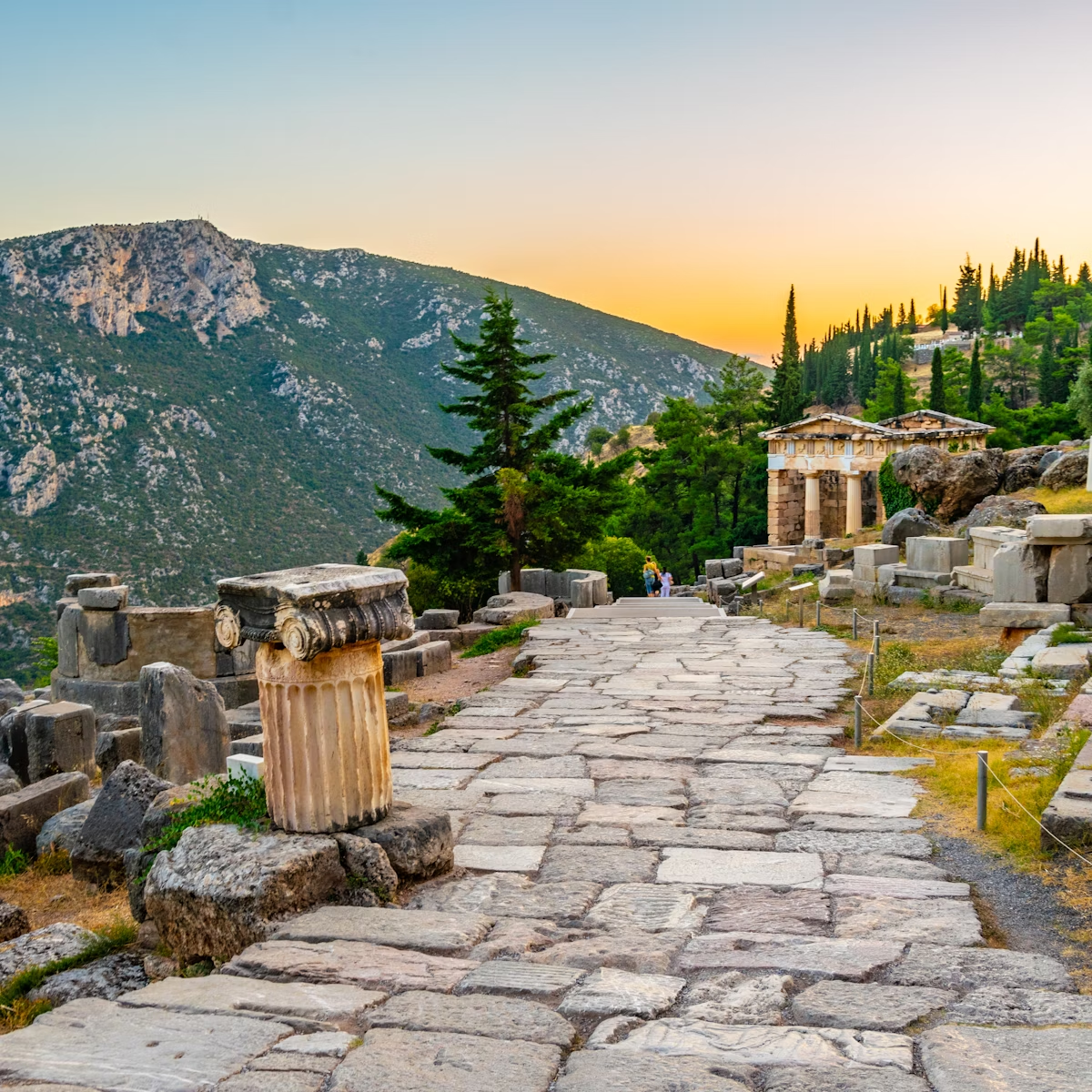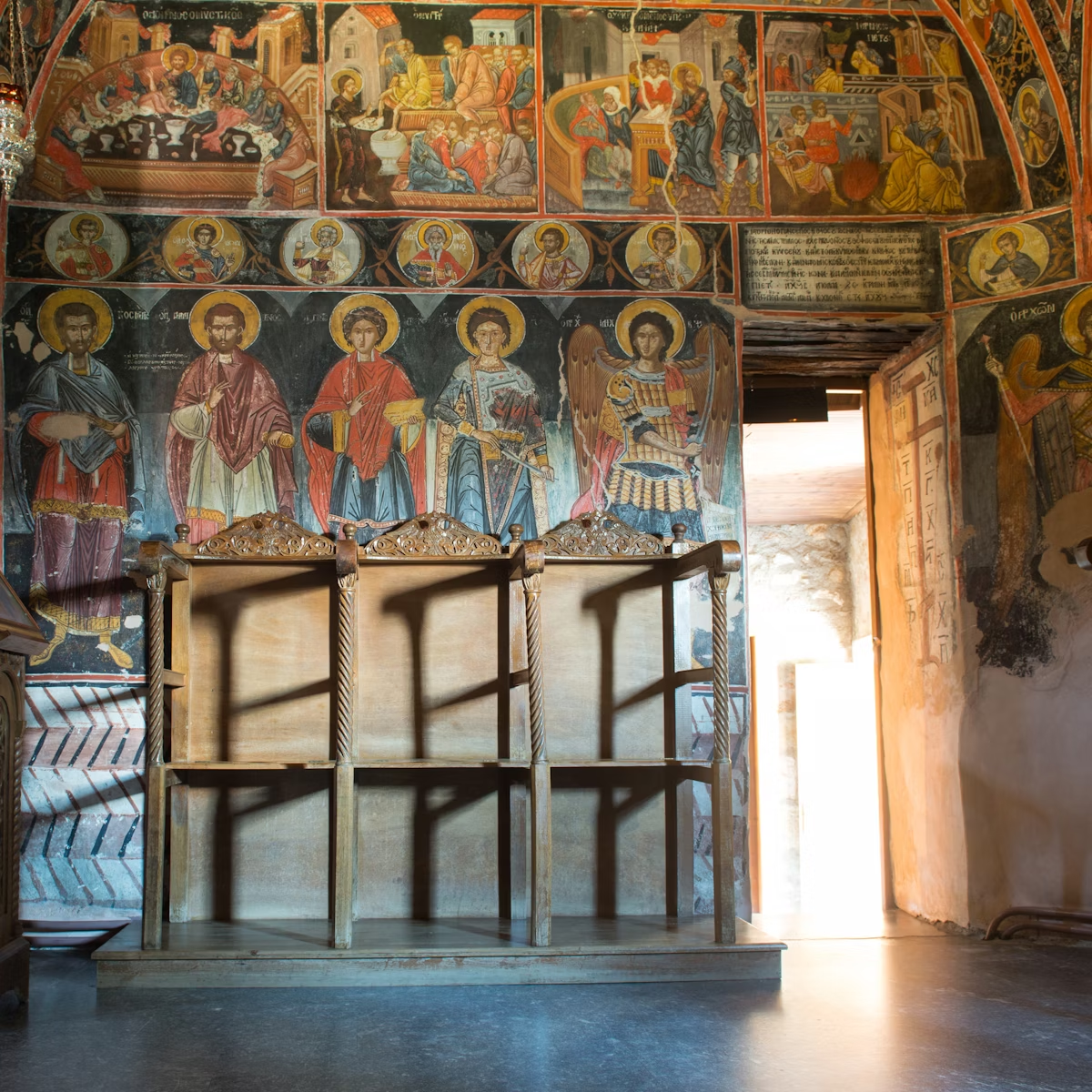
Delphi
Serving as the heart of Ancient Delphi, the hillside Sanctuary of Apollo is where pilgrims would journey to hear prophecies from the god Apollo, voiced…

©trabantos/Shutterstock
Central Greece holds three utterly unmissable destinations. To the ancient Greeks, Delphi, the most visited, was the centre or 'navel' of the earth. It remains as magical as ever, with its superb archaeological site and magnificent scenery. The Meteora region, at the northwestern edge of the plain of Thessaly, is similarly breathtaking, with towering rocky outcrops topped by teetering monasteries (and rock climbers). And the beautiful Pelion Peninsula, beside the Aegean to the east, is criss-crossed with cobblestone paths that link lush mountain hamlets with beaches to rival the finest islands.

Delphi
Serving as the heart of Ancient Delphi, the hillside Sanctuary of Apollo is where pilgrims would journey to hear prophecies from the god Apollo, voiced…

Delphi
Delphi’s magnificent modern museum, 500m east of town, perfectly complements the ancient site alongside. Which you visit first doesn’t matter, but the…

Central Greece
The monastery of Moni Osios Loukas, a World Heritage site, overlooks a remote valley 23km southeast of Arahova, between the villages of Distomo and…

Meteora
Of all the Meteora monasteries, Moni Agias Triados, which featured in the 1981 James Bond film For Your Eyes Only, feels the most remote. A long down-then…

Meteora
Dramatically perched atop a steep pinnacle and accessed via a high narrow wooden bridge, Rousanou convent has an intimate atmosphere. Its small community…

Delphi
Of all Greece's archaeological sites, Ancient Delphi has the most potent spirit of place. Centring on the mountainside Sanctuary of Apollo, home to the…

Central Greece
Towering northwards above Delphi and Arahova, Mt Parnassos was sacred to the gods Dionysos and Apollo. The modern Parnassos National Park holds three…

Central Greece
One of the greatest military feats of antiquity, still legendary 2500 years on, took place at Thermopylae, signposted off the road to Athens 17km…

Filter by interest:
